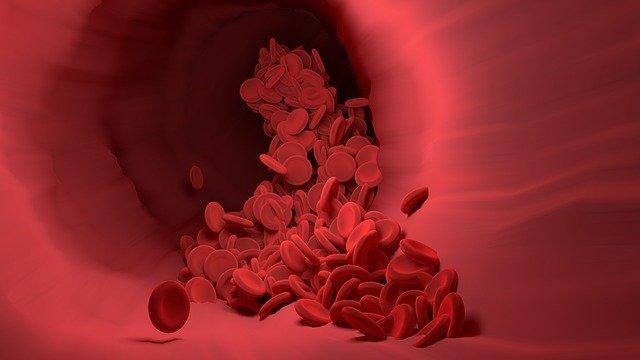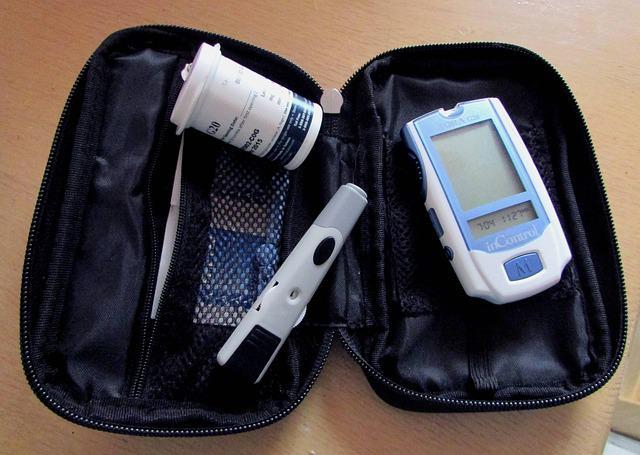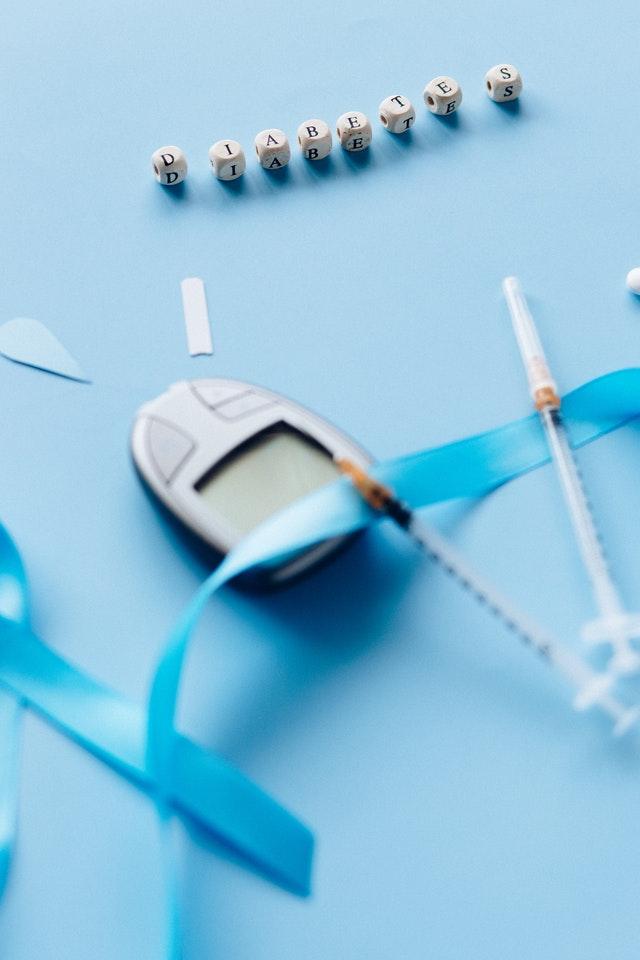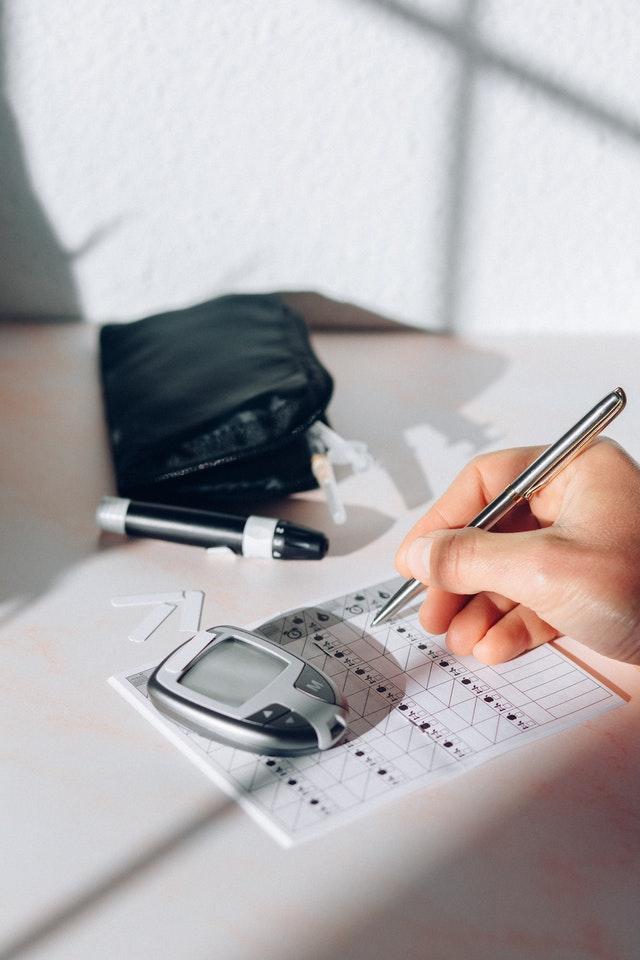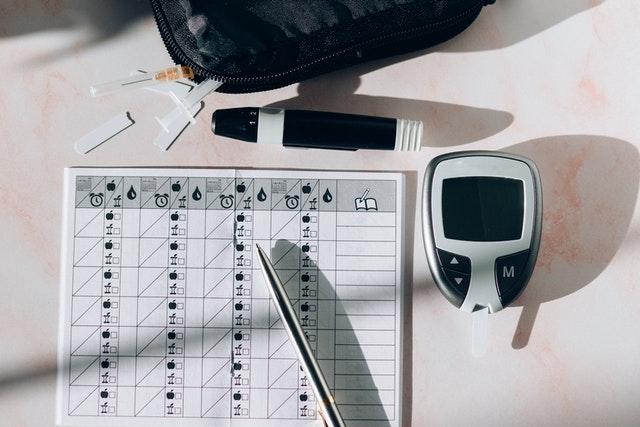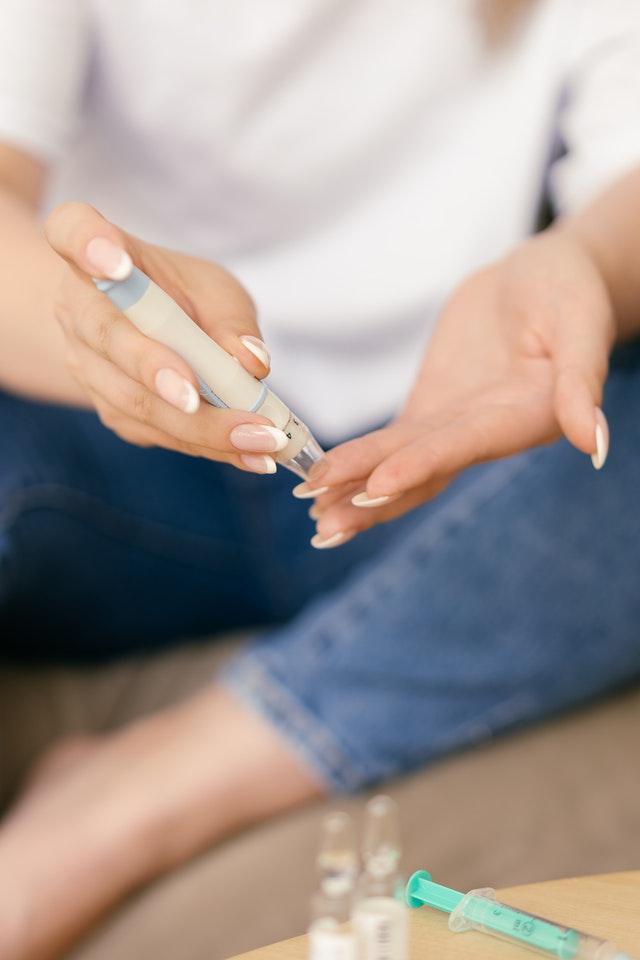Author Archive

Can Apple Cider Vinegar Lower Blood Sugar Immediately?
A significant improvement in blood glucose levels was noticed 30 minutes after consumption of apple cider vinegar by a group that used it on a short-term basis.
Over the years, folk medicine has favored apple cider medicine. Additionally, there have been multiple claims made by persons using it for its supposed advantages.
Apples are chopped, covered with water, and left at room temperature until the natural gas ferments and turn into ethanol to produce apple cider vinegar.
Bacteria then transform this alcohol into acetic acid. In the cider, “mother” strands will start to form.
These are frequently the subject of health claims and are strained out of certain products but not others. The following batch of cider can also be made using the “mother,” if desired.
Apple Cider Vinegar Nutritional Value
Apple cider vinegar does not have a significant quantity of vitamins, minerals, or even calories if you look at the nutritional fact label.
This is because the potential health benefits of apple cider vinegar are found in substances that do not form part of the standard nutritional label.
The acetic acid which forms during fermentation is apple cider vinegar’s claim to fame. There are multiple health benefits to acetic acid.
Raw apple cider also contains the following:
• Natural probiotics (friendly bacteria). This will help boost your immune system and gut health.
• Antioxidants. It will help in preventing any damage to your body’s cells.
But will apple cider vinegar really help you control blood sugar?

There is proof that fermented foods, including apple cider vinegar that contains lactic or acetic acid, can lower blood sugar levels by assisting the liver in storing glucose.
As a result, the body produces and absorbs glucose at a slower rate.
You should dilute 1 – 2 tablespoons of apple vinegar cider in a glass of water if you wish to consume it.
If you want the best and the greatest impact on your blood sugar, you should drink it just before bedtime or before meals.
Apple cider vinegar can cause stomach irritation or damage your tooth enamel. Therefore, you should not consume undiluted apple cider vinegar just like with most kinds of vinegar.
Cider made from apples is another useful cooking component. Therefore, you can use apple cider vinegar in multiple items such as salad dressings, marinades, sauces, and soups. Besides, multiple types of fish and meat work well with apple cider vinegar.
The distilled kinds of apple cider vinegar are the ones that people are most likely to see for sale. This variety of apple cider vinegar is colorless and transparent.
Side Effects of Apple Cider Vinegar
Despite apple cider vinegar having multiple benefits to your health, there are certain side effects that may come along especially if you do not use it correctly.
Some of the side effects of apple cider vinegar include:
• When your tooth enamel erodes you can never get it back. Apple cider vinegar is high in acidity. The acidity of the apple vinegar cider is likely to erode your enamel.
• If you drink apple cider vinegar straight it can easily damage your esophagus.
Watering down the apple cider vinegar is a great way of reducing its acidity and preventing problems such as enamel erosion and damage to your esophagus.
You can water down your apple cider vinegar by adding a tablespoon to a mug of warm water.
Other possible side effects of apple cider vinegar include the following:
• Lower potassium levels. Hypokalemia is a condition caused by low potassium levels. If you have low potassium levels in your body, it is advisable for you not to use it since it may worsen your condition.
• Interaction with medicines. Some medicines, such as diuretics and insulin, can interact with apple cider (water pills). Therefore, it is advisable that you ask your doctor if it is safe for you to use apple cider vinegar if are taking any medications.
• Nausea and vomiting. Some folks can’t stand apple cider vinegar’s taste or acidity, very literally. Therefore, you should stop using apple cider vinegar if it makes you feel sick.
Availability
Additionally, you can get apple cider vinegar as pills or gummies. There is no recommended dosage, so read the product’s instructions carefully or ask your doctor how much is safe for you. Look for a company that has received a third-party endorsement.
Takeaway
You may want to consider consuming diluted apple cider vinegar if you have type 2 diabetes since scientists believe it is safe to drink.
Additionally, drinking apple cider vinegar may be beneficial to your body when it comes to helping you control your blood sugar levels.
However, scientific evidence supporting the use of apple cider vinegar helps in controlling blood sugar levels is little. Therefore, using apple cider vinegar or any other isolated dietary change to be a quick fix for diabetes should not be considered.
Some of the most effective methods of controlling diabetes that you can use include eating a high-fiber diet containing the correct amount of carbohydrates, protein, and healthful fat. You should also do physical exercise regularly.
Is apple cider vinegar better than other types for blood sugar control?
Apple cider vinegar is the type of vinegar that has been studied by scientists most often for reducing blood glucose levels. However, it is believed that other types of vinegar have the potential to act similarly in the body according to researchers.
All vinegar contains acetic acid, which is the element that scientists think has an impact on managing blood sugar, cholesterol, and weight.
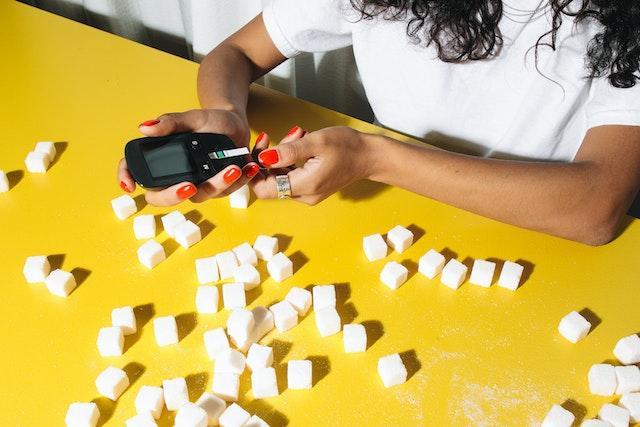
Without mentioning apple cider vinegar specifically, some research employs vinegar solutions. For example, one study showed that a 30 milliliter(ml) vinegar solution that contained 6 percent acetic acid had positive effects on glucose and lipid metabolism.
Based on acetic acid concentrations and the impact of that specific component on blood sugar, vinegar should help improve these levels theoretically.
The majority of food vinegar variants have an acetic acid content of 4–7%. To verify the advantages and outcomes of various kinds of vinegar, scientists must do additional investigation.
FAQ:
Does vinegar lower blood sugar quickly?
The rate at which your stomach empties the food you have eaten into the small intestine is slowed down by the acetic acid in vinegar.
This in turn provides the body more time to eliminate glucose from circulation and inhibits the breakdown of carbohydrates. In the end, this lessens the regular blood sugar increase following a meal.
How much apple cider vinegar do I take to lower my blood sugar?
It is interesting to note that only a tiny amount of apple cider vinegar is required to produce these results.
It has been demonstrated that taking four tablespoons (20 ml) of apple cider vinegar before meals dramatically lowers blood sugar levels after meals.
Does taking apple cider vinegar before bed lower blood sugar?
The best times to drink apple cider vinegar for blood sugar control are shortly before meals and right before bed.
For instance, consuming 2 tablespoons (30ml) of apple cider vinegar at bedtime for two days lowered fasting blood sugar levels by as much as 6% in a study of persons with type 2 diabetes.
Should I drink apple cider vinegar before or after my meal?
Consuming apple cider vinegar on an empty stomach is the best way to take it. Vinegar might lose some of its potency when you eat certain foods and drinking vinegar before meals help your body metabolize food more quickly.
Waiting for at least 20 minutes after consuming the apple cider vinegar before eating anything is recommended by experts.
How much apple cider vinegar should you drink a day for diabetes?
You should drink around two (2) spoons every day. Never drink it straight; always dilute it with water, seltzer, or tea, or include it in your food. Consume no more than 2 tablespoons daily.
What happens when you drink apple cider vinegar every day?
Lower blood triglycerides, smaller waist circumference, reduced belly fat, and weight loss are some of the results of consuming apple cider vinegar every day according to a study published in Bioscience, Biotechnology, and Biochemistry.
What is the best time to take apple cider vinegar for diabetes?
Takin 20 grams (20 ml) of apple cider vinegar diluted in 40ml of water, with 1 teaspoon of saccharine, could lower your blood sugar after meals according to research from 2004.
Additionally, taking apple cider vinegar before bed helped moderate blood sugar upon waking accordioning to another study from 2007.
How can I stabilize my blood sugar overnight?
Checking your blood sugar (or CGM) before is a great way of stabilizing your blood sugar overnight. Additionally, eating lots of food close to bedtime should be avoided.
Low-carb, early dinners without any after-dinner snacks are crucial for many diabetics to stay in range overnight. To cover your evening meal, you could choose to eat less at night and increase your basal insulin intake.
How long should I wait to eat after taking apple cider vinegar?
Yes. You can drink diluted apple cider vinegar on an empty stomach. In fact, it is the recommended way to take apple cider vinegar. Just wait about 20 minutes or so after drinking apple cider vinegar to eat.
Can apple cider vinegar damage your kidneys?
Your kidneys shouldn’t be harmed by apple cider vinegar.
What medications can you take with apple cider vinegar?
A few drugs and apple cider vinegar may not interact well.
Some medicines for diabetes. Those who consume vinegar while taking insulin-stimulating drugs run the risk of having dangerously low potassium or blood sugar levels.
Digoxin (Lanoxin). Your blood potassium levels drop when you take this drug.
Certain diuretic drugs.
Does apple cider vinegar interfere with blood pressure medication?
Continue taking any prescription drugs, and adhere to any suggested schedules. More research is required, but apple cider vinegar may help decrease blood pressure. However, it doesn’t seem that using apple cider vinegar moderately carries any hazards.
When should you not take apple cider vinegar?
If you have a sluggish stomach, you should avoid drinking apple cider vinegar.
Additionally, drinking ACV can affect the muscles of your stomach if your digestive system is slow.
Limiting the intake of apple cider vinegar to one teaspoon a day mixed with water or sprinkled on the salad is advisable in such cases or you should avoid it completely.
Caution:
To maintain healthy blood sugar levels, do not use apple cider vinegar by yourself. Maintain a healthy diet and exercise routine to treat or prevent diabetes.
Before increasing your intake of any type of vinegar you should talk to your doctor if you are currently taking blood-sugar-lowering medications.

Does MSG Affect Diabetes?
What is MSG?
MSG is a short form of monosodium glutamate. Intake of MSG in healthy adults has been linked with type 2 diabetes, obesity, and metabolic syndrome.
This is because, regardless of energy intake, intake of MSG in healthy adults correlates with the resulting increase in body mass index.
It is a flavor-improving substance made from L-glutamic acid, which occurs naturally in many meals.
Because l-glutamic acid is a non-essential amino acid, your body can make it on its own and does not require food to provide it. MSG is a common food additive that is a white, odorless crystalline powder.
It is referred to as E621 in the food business. With little effort, it dissolves in water and separates into sodium and free glutamate.
It is created by fermenting sugary ingredients including molasses, sugar cane, and sugar beet.
Your body cannot differentiate the difference between glutamic acid found naturally in some foods and that found in MSG since there is no chemical difference between them.
Unami, a distinct flavor associated with MSG, is the fifth basic flavor after sweet, sour, salty, and bitter. The flavor of Unami is described as “meaty,” alluding to the presence of proteins in food.
Inosine 5’-monophosphate (IMP) and guanosine 5’-monophosphate (GMP) as other Unami compounds apart from MSG. MSG is widely utilized in processed foods in the West and is popular in Asian cuisine.
People’s typical daily intake is thought to range between 0.3 and 1.0 grams. MSG is typically consumed in processed and packaged foods in Western nations, but it is frequently added to home cooking in China.
650,000 tons of MSG are used globally every year according to estimates. Increased risk of insulin, diabetes, and obesity has been found to be brought by intake of MSG in studies done in rodents.
The association between MSG intake and the risk of hyperglycemia after five years was assessed by researchers in the Jiangsu Nutrition Study (JIN) study that was based on a large population-based in China.
A total of 1056 people (445 men and 611 women) with fasting plasma glucose of 7.0 mmol/l (FPG>126 mg/dl) or having known diabetes and hyperglycemia as FPG>5.6 mmol/l (FPG>100.9 mg/dl) were involved in the Jiangsu Nutrition Study (JIN).
Each household was asked about their usual monthly consumption of these items to determine the amount of MSG and other seasonings consumed by individuals.
The quantity of MSG consumed per person was determined by dividing the total amount of MSG consumed by the number of people living in the household by the number of people in each household.
This figure was then adjusted for the proportion of each person’s energy intake and consumption. Also evaluated in 1056 participants was the consumption of alcohol and cigarette smoking.

It was found by the authors that the mean intake for the entire population that participated in the research was 3.8 g/day.
Even after adjustment for a number of covariates, including dietary patterns, it was found that the highest quartile of MSG intake was associated with a lower risk of incident hyperglycemia.
Based on the findings of this study, the authors came to the conclusion that Chinese individuals who consume a lot of MSG have a lower chance of developing hyperglycemia.
To establish the casual links between MSG intake and hyperglycemia, more research is needed.
For many years, MSG has been used as a food additive. The FDA has received multiple reports of concerning reactions that people have attributed to foods that had MSG in them during this time.
The concerning reactions were known as MSG symptom complex and they included the following:
• Headache
• Flushing
• Sweating
• Face pressure or tightness
• Numbness (lack of feeling), tingling or burning in the face, neck, and other areas
• Quick fluttering heartbeats
• Chest pain
• Nausea or feeling sick
• Weakness
Common foods that contain MSG
Many different foods especially those that are high in protein contain MSG present naturally. Additionally, during processing, MSG is added to ingredients and other foods.
These are some of the common foods that you may be eating daily that contain MSG:
• Animal-based protein: chicken, beef, salmon, mackerel, scallops, crab, shrimp
• Cheese: Parmesan, Emmenthal, cheddar, Roquefort
• Vegetables: tomatoes, onions, cabbage, green peas, spinach, mushroom, broccoli
• Processed meats: pepperoni, bacon, pastrami, sausages, salami
• Sauces and dressings: soy sauce, ketchup, mustard, mayonnaise, barbecue sauce, salad dressing
• Premade and packaged foods: canned soups, canned tuna, frozen meals, crackers, potato chips, flavored snacks
• Condiments: seasoning blends, rubs
Further, to season menu items like fried chicken, chicken nuggets, and fries, fast-food chains such as McDonald’s, Chic-fill-A, and KFC use MSG.
1. Does MSG spike insulin?
Fasting healthy subjects given monosodium glutamate orally has been shown to raise plasma insulin levels without changing blood glucose levels.
2. What is MSG made of?
MSG stands for Monosodium Glutamate and it is consisting of water, sodium, and glutamate. An amino acid used to make proteins in food and our body is known as glutamate. There is no distinct flavor associated with MSG.
3. Does MSG spike blood pressure?
A significant increase in SBP and DBP was associated with MSG intake. SBP and DBP were more likely to rise in women who consumed a lot of MSG. Consumption of total glutamate was likewise positively correlated with a rise in SBP.
4. Does Chinese Food Spike Blood Sugar?
In diabetes, Chinese foods are considered one of the worst foods to consume. This is because they are high in calories, sodium, fat, and carbohydrates that can dramatically increase your blood sugar levels.
5. Is MSG Worse Than Salt?
Reaching for MSG to flavor your food can help you eat less sodium since it contains two-thirds less the amount of sodium compared to table salt. Therefore, it is a great option if you are looking to lower your sodium intake.
6. Is MSG Harmful?
MSG has been classified as a food ingredient that is generally recognized as safe by the U.S. Food and Drug Administration (FDA), although many health advocates do not agree with this assessment.
7. Does MSG Cause Inflammation?
MSG – Monosodium glutamate, which is frequently found in Asian cuisine, especially dishes made with soy sauce, can cause inflammation. Additionally, canned soups, salad dressings, and several fast foods frequently include it.
8. Does MSG Affect Cholesterol?
The results of the current study also showed that oral administration of MSG considerably increased the levels of serum LDL and VLDL cholesterol in the treatment groups. Additionally, a notable decline in HDL level was seen.
9. Is Ajinomoto Same As MSG?
Basically, Ajinomoto and MSG are the same things. MSG is the brand name of the product, and Ajinomoto is the name of the Japanese manufacturer.
The brand name Ajinomoto itself became rather well-known for the product, so the business copyrighted it to ensure exclusivity.
10. Why Is Ajinomoto Harmful?
It may cause a number of problems, including tingling and burning in the face and neck. The MSG in question is a neurotransmitter that activates the nerves and throws the neurotransmitter equilibrium.
Ajinomoto has a connection to these conditions, which can include illnesses like Alzheimer’s, Parkinson’s, and Huntington’s.
11. How Do You Avoid MSG?
The only sure way of avoiding prepacked food products is by making everything from unprocessed ingredients since MSG is pretty much in them.
Additionally, rather than dining out or purchasing frozen meals, cook your food. Rather than processed, canned or vacuum packed, buy your ingredients in the raw.
12. What Should a Diabetic Eat at A Chinese Restaurant?
You should focus on dishes packed full of lean proteins and vegetables with limited rice and noodles when ordering Chinese. An example might be steamed chicken and broccoli with the sauce on the side.
13. How Long Does MSG Stay in Your System?
Symptoms brought on by MSG are normally mild and disappear completely on their own within 72 hours.
However, you should speak to your healthcare provider, if your symptoms do not appear to resolve or continue worsening after 48 hours as it may be something more serious.
14. What Does MSG Do in Your Stomach?
A number of acid-dependent disorders may have their pathophysiology associated with the stimulating impact of MSG on the basal secretion of hydrochloric acid in the stomach.
MSG overuse can result in “Chinese Restaurant Syndrome,” gastritis, and duodenal and stomach ulcers.
15. Does MSG Affect Your Joints?
Other goods that include MSG, such as flavored canned potato chips, canned soups, soup mixes, salad dressings, and other processed sauces, are mostly unknown to the majority of people.
MSG contributes to persistent inflammation and makes age- and injury-related joint pain worse.
16. What Does MSG Do to The Brain?
MSG causes havoc on brain processes as well as the death of brain cells when it enters the brain.
Even in tiny amounts, MSG can produce reactions in many people within 48 hours, which might make it challenging to identify the exact dish that caused the reaction.
17. Does MSG Make You Gain Weight?
People who eat more MSG are more likely to be overweight or obese according to the researchers’ results.
And the risk was not just elevated because people were overindulging in MSG-rich meals. Even after taking into consideration the total quantity of calories people consumed, the association between high MSG consumption and being overweight persisted.
18. How Can You Tell If Food Has MSG In It?
In the ingredient list on the label of the majority of packaged foods, food makers must indicate when MSG is included, either by name or by its addictive code number 621. For instance, MSG might be identified as a Flavor enhancer (MSG).
19. How Much MSG Is Too Much?
While there is conflicting evidence regarding how MSG may affect general health, it is obvious that taking excessive amounts of the flavoring—3 grams or more daily—is likely to have negative side effects, such as headache and raised blood pressure.
20. How Do You Flush Out MSG?
Numerous glasses of water may lessen the severity of your symptoms and assist in flushing the MSG from your body.
Conclusion
The body of research on MSG’s impact on diabetes is unclear and has significant gaps. It’s possible that eating MSG will have negative effects.
The majority of these effects are noticeable at oral doses greater than 2000 mg/kg as well as at lower levels via gavage or injection. Lower oral doses, however, did not offer convincing proof.
Given the diversity of type 2 diabetes, MSG may be one of the many environmental factors that contribute to the condition.

5 Diabetes Dessert Recipes
Having diabetes should not restrict you from enjoying sweet treats. Some recipes are ideal for people with all types of diabetes, including pre-diabetes, diabetes type 1, diabetes type 2, and gestational diabetes.
Ideally, diabetes desserts should have one or more of the following things compared to traditional desserts:
• More fiber
• Less sugars
• Increased proteins
• More plant-based fats
If you have diabetes and you want to lower your sugar level, here are dessert recipes you should try:
5 Diabetes Dessert Recipes
1. Strawberries & Whipped Cream

The dessert is rich in antioxidants making it a good choice for diabetic people looking to boost their immune system. The ingredients include strawberries, powdered stevia, and heavy whipping cream.
Ingredients:
- Heavy Whipping Cream (1/2 cup)
- Strawberries (1/2 pound)
- Powdered Stevia (1 tablespoon)
The process of making strawberries and whipped cream is straightforward. Just slice up the strawberries and sprinkle some stevia to taste.
Add the heavy whipped cream and if you want to add some taste, consider adding milk or coconut milk.
2. Chocolate Chip Cookie Dough Bites
Egg-free no-bake cookie dough bites are perfect for you and your family. Have you ever heard of garbanzo beans?
It is a secret ingredient that makes the cookie dough bites delicious and nutritious.
Garbanzo beans are rich in proteins and fiber, which helps in lowering blood sugar levels. Although not everyone likes sugary foods, you can add maple syrup to sweeten the cookies.
Remember, if you want to balance blood sugar, almond flour is the best.
Ingredients:
- 1 1/4 cups oats
- 1 cup almond flour
- 1 can low sodium garbanzo beans rinsed and drained
- 2 tsp vanilla extract
- 1/4 tsp salt
- 1/2 tsp cinnamon
- 1/3 cup maple syrup
- 1/2 cup chocolate chips
Follow these steps to make no-bake cookie dough bites:
It’s best to mix oats and almond flour in a food processor until a fine powder is visible.
Add the rest of the ingredients except the chocolate chips. Process the ingredients until you form a batter.
If the mixture is too dry, consider adding some water. Adding some water makes the process easier.
Transfer the mixture to a bowl and stir the chocolate chips by hand. Use a cookie scoop to roll the dough into balls, then refrigerate them for about 4 hours.
Refrigeration is crucial to make the chocolate chip cookie dough bites fluffy and round without baking them.
To make mini chocolate chips:
Start the process by preheating the oven to 350°F.
Add ½ tablespoonful baking powder, flaxseed egg, or an ordinary egg to the original ingredients.
Follow the steps discussed above besides the refrigeration step.
It is advisable to skip the refrigeration step because you will eventually bake the mini chocolate chips. After transferring the mixture into a bowl, stir the chocolate chips by hand. Remember, unlike the no-bake chocolate chip cookies, mini chocolate chips should not be eaten raw because we added an egg.
Therefore, the final step entails baking the cookies for about ten minutes. When ready, the edges will start turning golden brown. Remove the cookies from the oven and transfer them to a cooling rack.
If you store the cookies in an airtight container, they can last up to a week. However, if you freeze them, they can stay fresh for up to three months.
3. Vegan Cherry Chocolate Coconut Milk Chia Pudding
You need the following ingredients:
• Coconut milk (1 1/2 cups) or any other type of milk (to keep the dessert vegan, almond milk chia pudding or coconut milk chia pudding is the best)
• Chia seeds (A little more than 1/4 cup) are antioxidants and rich in calcium, iron, proteins, and omega-3 fatty acids.
• Cacao powder (1/4 cup)
• Powdered monk fruit sweetener (2-3 Tablespoons)
• Cherries (1/4 cup, pitted and sliced)
• Heavy whipping cream (1/4 cup)
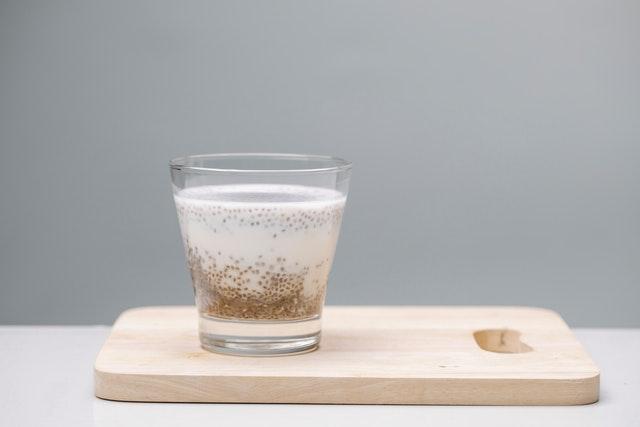
The process of making makes cherry chocolate coconut milk chia pudding is very simple. Gather, clean, and mix all the ingredients in a bowl or mug. Leave the ingredients for 4 to 5 hours to gel and firm up.
It is advisable to make the chia pudding overnight to allow the chia seeds enough time to gel and firm up.
4. Lemon Mini Cheesecake
Making this no-bake lemon mini cheesecake is easy and fast.
Typically, it would be best to make a crust first, then fill and mold the no-bake cheesecake.
However, you need a high-powered blender or food processor to prepare these delicacies successfully. So, how do you do it?

Start by adding coconut flour and oats to a blender or food processor. Blend the mixture for a few minutes until you form a fine white powder.
Add the remaining ingredients, i.e., vanilla extract, almond extract, lemon zest, cream cheese, and maple syrup. Continue processing until the ingredients become smooth.
Scoop the batter into a container, sprinkle the bites, and add coconut or lemon zest to taste. To harden the cheesecakes, refrigerate them for 2 to 4 hours.
5. Gluten Free Pumpkin Cookies
This is another no bake recipe.
Pumpkin is very nutritious, thus making it an important ingredient when making gluten-free pumpkin cookies. The no-bake gluten-free pumpkin cookies need a wet base for a start. Nut butter, maple syrup, or pumpkin puree are ideal choices. You need the following equipment:
• Bowl
• Whisk
• Spatula or rubber spoon
• Microwave
• Fork
• Storage container
Here’s the ingredient list:
- 1 cup nut butter (Almond butter is slightly healthier than peanut butter)
- ½ cup maple syrup
- 1 cup pumpkin puree
- 1 tsp vanilla extract
- 1 1/4 cup coconut flour
- 1 tbsp cinnamon
For a start, mix the maple syrup, vanilla extract, and pumpkin puree in a bowl. Whisk the ingredients until they mix thoroughly.
If the almond butter is too thick, consider microwaving it before mixing.
The next step entails adding coconut flour and cinnamon and mixing them using a spatula or spoon.
Ensure the mixture is thick to form balls. Consider adding more flour if the dough is too thin.
Form the balls and use your hand or fork to make the balls round (shaping).
If you freeze the cookies in an airtight container, they can stay fresh for up to 3 months. Remember to thaw them before eating.
Conclusion
Although diabetic people fear desserts, that should not be the case. However, you should steer clear of desserts with high sugar and carbohydrates.
Eating healthy foods is highly recommended, especially if you have a health condition. Therefore, consider seeking professional advice and researching to determine what you should and shouldn’t eat. If you are not sure about anything, do not take risks.
Instead, consult your dietician to know if you are making a mistake.
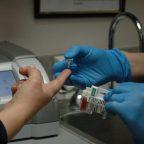
Estimate Your A1C Using Your Continuous Glucose Monitoring System
Even though A1C has been the gold standard in diabetes care, there is a huge limitation that this type of measurement possesses.
One of the most critical is the fact that A1C test results are considered to be an average only.
Unlike the latest studies that compare the A1C tests with the GMI (Glucose Management Indicator), GMI provides diabetic patients with an estimated level based on a continuous source of monitoring.
As a result of these averages, an individual may spend a huge amount of their time with both low and high sugar levels. Yet, still, be on target (i.e.what’s expected for most people with diabetes) with an A1C of under 7%.
Limitations of A1C
Based on these findings, it is important to note that A1C measurements are not considered to be perfect. Even though there has been quite a bit of effort in the past to reach perfection in its accuracy, these tests are still accurate within a margin of error of about 0.4 % points.
For example, these results may equate to an A1C that ranges from about 6.4% to 7.2%. Typically, for anyone who wears a CMG (Continous Glucose Monitoring System), the GMI is primarily seen as an estimate of their A1C.
Without using data from drawing blood, 14 days of data is needed to calculate the GMI. The GMI, in this case, uses an average of the person’s glucose reading to provide an estimate of their A1C.
TIR, TBR, and TAB are 3 other ways to manage glucose levels. For instance, these measurements are as follows:
- TIR (Time in Range): Glucose Levels range from 70 to 180 mg/dl
- TBR(Time below Range: Glucose Levels range below 70 mg/dl
- TBR(Time above Range: Glucose Levels range over 180 mg/dl
These measurements can be very useful in determining if a patient is actually meeting their glucose targets or if they need to be adjusted with another course of action. For instance, based on the numbers provided above, in general, an A1C of 7% or less equates to a TIR of 70% or higher.
Differences Between GMI and A1C
It normally takes about 2 to 3 months for new red blood cells to form. This is also the timeframe that A1C turnover is based on.
This is one of the primary reasons why an A1C level is only taken on a quarterly basis. The GMI, on the other hand, can be checked on a more frequent basis. This is primarily due to the fact that this indicator is based on a CGM date instead.
How Accurate is the GMI?
The answer to this question usually varies based on a number of different factors. Because the A1C on the CGM report is affected by the following information:
- Red blood cell turnover may be falsely skewed due to medical illnesses and diseases like anemia, sickle cell, genetic conditions, and other things that can affect the hemoglobin
- Chronic conditions like kidney diseases may show a false low in average A1C levels
- Blacks, Asians, and Hispanics (i.e. People of color) usually see higher levels of their A1C
- Indigenous individuals
All of these continuous glucose monitoring system factors must be taken into account before these numbers are considered to be accurate.
Real World Analysis of Glucose Monitoring System
Even though both of these measurements are being used in the real world, there is still little real data that compares both of these measurements for their comparable accuracy.
Lately, however, the University of Washington looked at the differences between A1C and how it compares to the GMI and its accuracy. The study from the University of Washington was able to identify the following data.
Between the years 2012 and 2019, 641 people with diabetes were used in a study to compare the results documented in A1C within a 30-day window before or after their healthcare visits.
This CGM report was uploaded and the information was as follows:
- The data on the CGM report had to encompass at least 14 days of information with 95% data sufficiency or more.
- The accuracy of the data was dependent upon the completion of the information supplied
The profile of the study group was as follows:
- 46 years of age was the average age of the study group
- Female population 52%
- Caucasian 93%
- Type 1 Diabetes – 91%
The Dexcom G5 was the most commonly used (i.e. calibrated 2 times daily).
However, there were other devices also used in this study, including the following:
- Dexcom G6
- Freestyle Libre
- Medtronic Enlife
- Medtronic Guardian
The CGM report was also based on the following averages:
- 24.5 days
- A1C of 7.3%.
- Mean CGM glucose equated to 162 mg/dl
Findings in the Study
The findings in this study were surprising, particularly since the discrepancies were much higher than those that were observed in previous trials. There was a huge difference between GMI and A1C.
For instance, according to this report, the researchers found the following:
- Patients with type 1 diabetes were reported as having a.17 percentage points fewer difference between A1C and GMI in comparison to patients who had type 2 diabetes.
- A .19 percent point greater difference was reported between GMI and A1C, in specific for patients who had a reduction in kidney function.
- No discrepancies were found in any specific device
Study’s Limitations
It is also important to note that the results of this study had their limitations.
Some of the most notable include:
- The population was not controlled and did not take into account outside factors (i.e. changes in meds)
- CGM dates were not parallel
- Accuracy of devices
- The quality of the Calibrations vary
Applications to the Real World
In the real world, the GMI may be able to predict what future A1C may be. However, you cannot expect a perfect match. Yet, both results could be somewhat close based on a .5 percentage. Also, during COV19, a large number of health care centers relied on GMI for their results.
It is also important to remember that both of these measurements are seen as estimated averages. Therefore, everyone needs to see each of these forms of measurement in the best context possible.
For instance, you should not be disappointed in cases where you do not reach your target. Your primary focus may need to be on the TIR (Time in Range). This is especially true if you need the extra encouragement to keep going in a positive way.

Can You Lose Weight with Metformin?
Diabetes is one of the conditions that affect most people globally. Luckily, there is medication for this condition.
The most common diabetes medication that can also improve diabetes management, according to research, is Metformin. According to research, it has been found that certain people might lose weight by using Metformin.
If you have type 2 diabetes, one of the first treatment options considered to help you manage glucose levels in your body is Metformin. There is research that suggests that Metformin may likely lead to a modest weight reduction despite it being not a weight loss drug.
Metformin and Weight Loss
People with diabetes were treated with Metformin, and they lost up to 8 kgs (around 18 lbs.) of their weight due to calorie intake, according to a small, 24-week study that was conducted in 1998.
Additionally, it was found that after using Metformin, over 4,000 people with type 2 diabetes experienced up to 2.5 kilograms (around 5.3 lbs.) weight loss for over four years when a much larger trial took place.
You are likely to lose a low amount of weight when using Metformin weight loss medication. Further, it was found that around 29% of people lost 5% or more of their body weight, and only 8% lost approximately 10% after using Metformin for weight loss.
There are various ways that using Metformin weight loss medication might have an impact on your weight. Reducing your appetite is one of the ways that Metformin for weight loss medication works.
Hormones such as Leptin and insulin have a significant role to play in your appetite. Using Metformin increases your body’s sensitivity to these hormones. Leptin is essential to your appetite since it is responsible for letting your body know when it is full and stop eating.
When your body increases its sensitivity to this hormone, you may feel less hungry.
Further, the hormone responsible for suppressing appetite is known as GLP-1. Using Metformin may increase the secretion of this hormone in your body which then suppresses your appetite and then leads to you losing weight in the process.
Semaglutide (Wegovy), a GLP-1 receptor agonist drug that precisely targets this hormone, has received FDA approval to treat both obesity and type 2 diabetes.
Reducing the amount of visceral fat in your liver and muscle tissue is another way of metformin weight loss. The abdominal cavity, which houses your liver, stomach, and intestines, among other internal organs, is where visceral fat is deposited.
It can also accumulate in muscles, including the muscle in your heart. Because visceral fat is linked to a higher risk of a number of healthy illnesses like heart disease, it is seen as being more harmful than subcutaneous fat.
Side Effects of Metformin
Generally, Metformin is considered safe. However, there are certain side effects that come along when using this medication.
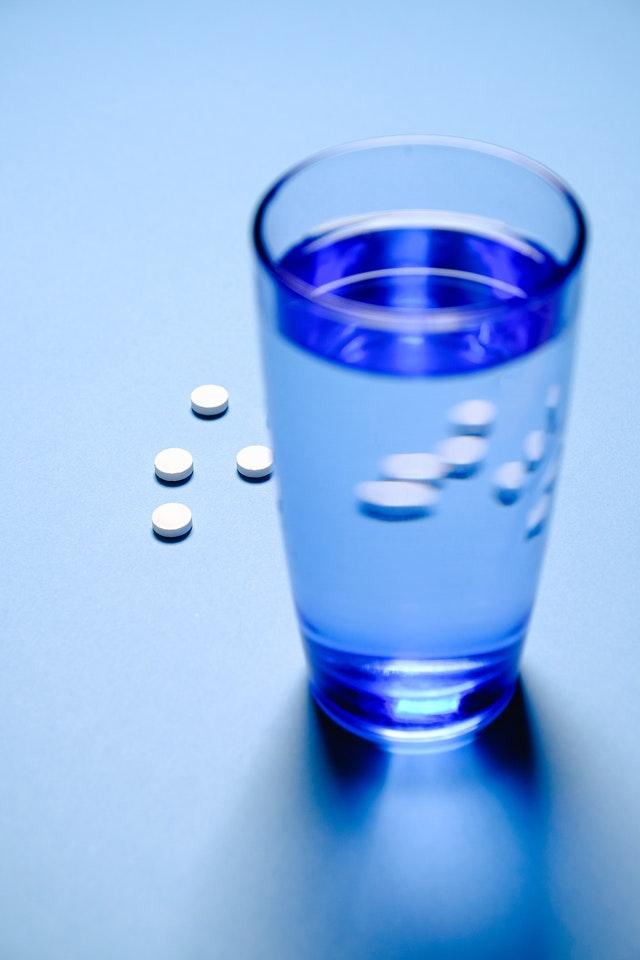
Some of the common side effects include vomiting, nausea and diarrhea. You can eat less food if you are experiencing unpleasant side effects. Consuming less food is a modest way of weight loss.
Off-bale use of Metformin for weight loss
The FDA has not approved the use of Metformin as a stand-alone therapy for weight reduction. This is because the weight loss effects of Metformin are inconsistent.
However, if doctors believe Metformin could be helpful, they may still prescribe it off-label. There are prediabetes patients with a high risk for metabolic complications, and off-label metformin use is more common.
Best ways to lose weight
Although it significantly lowers blood glucose, the generic drug metformin is not a weight loss aid. Despite this, maintaining a healthy weight is still crucial to managing your diabetes and lowering your risk of complications while also enhancing your general health and wellbeing.
FAQ about Metformin and Weight loss
1. Why does Metformin make you lose weight?
Metformin works by lowering the amount of visceral fat in your liver and muscle tissue to reduce your weight. Several of your body organs, such as the liver, stomach and intestines, are found in the abdominal cavity, where visceral fat is stored. It can also accumulate in muscles, including the muscle in your heart.
2. Can you lose belly fat with Metformin?
Despite Metformin having a beneficial effect on lipids, it has no clinically significant effect in reducing visceral fat mass. This trail gives credibility to the emerging data that Metformin is not a weight loss medicine.
3. How quickly do you lose weight on Metformin?
Metformin is not a quick fix despite studies showing that it may help with weight loss. When using Metformin, you will lose weight gradually, with the results starting to show after a year or two according to one-long-term sturdy. The amount of weight lost while using Metformin varies from one person to another.
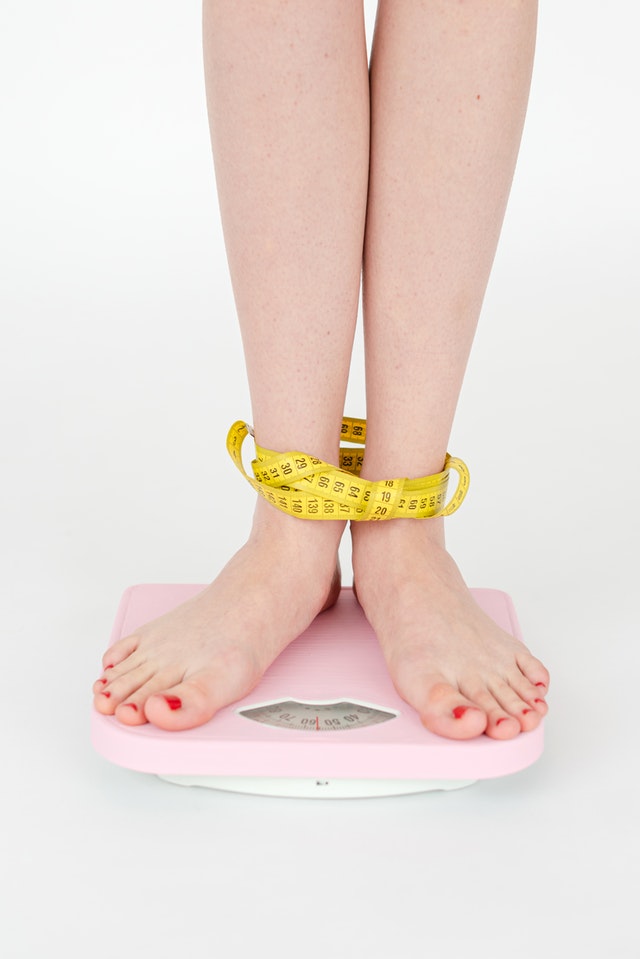
4. How do I know Metformin is working?
Your blood sugar levels will not reduce instantly when using Metformin. However, after taking Metformin, the effects can be noticeable within 48 hours. You will have clear signs that Metformin after using it for 4 to 5 days.
5. Does Metformin speed up metabolism?
The decline in fasting RQ suggests that fat was the primary energy source used during this time. Animal studies demonstrated that the administration of Metformin resulted in a decrease in body fat independent of its anorexigenic effects, which is consistent with energy metabolism results.
6. How long can you stay on Metformin?
Some patients with prediabetes are recommended to use Metformin by the American Diabetes Association. You will be on Metformin for the long term if it is prescribed for you.
Unless you experience changes that require you to stop using it or complications to your health, the long-term duration could take even decades.
7. Can a non-diabetic take Metformin to lose weight?
There is mounting evidence that Metformin may help obese non-diabetic people lose weight (6,33). According to a systematic review, orlistat and Metformin both effectively lower the BMI of overweight or obese women with polycystic ovary syndrome (PCOS)
8. Does Metformin make you poop?
It is not clear which mechanism metformin uses in lowering blood sugar concentration. However, it was found that Metformin promotes the excretion of sugar into the stool according to the bioimaging study on humans.
9. Does coffee affect Metformin?
Coffee contains caffeine. Metformin works by reducing how fast how your body breaks down caffeine. Therefore, caffeine in coffee might have increased effects and side effects when you take it with Metformin.
10. Should you drink a lot of water when taking Metformin?
In order to help reduce stomach or bowel side effects that may occur during the first few weeks of treatment, it is recommended that you take Metformin with water. It would be best if you drank a full glass of water while swallowing the tablet or extended-release tablet.
11. Is Metformin best taken at night or in the morning?
It is best to take Metformin at bedtime instead of supper time if you are taking it as Glucophage retard to improve diabetes control by reducing morning hyperglycemia.
12. Do I need to check blood sugar while taking Metformin?
When taking oral medications like Glucophage (Metformin), home testing is not typically necessary. Every three to six months, doctors generally request a blood test called a hemoglobin A1C test in place of testing.
13. How long does 500mg of Metformin last?
After taking Metformin (Glucophage), it will stay in your system for up to 96.8 hours or around four days. The half-life elimination of Metformin is around 17.6 hours.
14. What is the most common side effect of Metformin?
There are side effects that you may experience when using Metformin for the first time. Some of the side effects that you may have are nausea, vomiting and diarrhea. With time, these side effects disappear. You can take Metformin with a meal to reduce the side effects.

Diabetic Feet Swollen?
Are your diabetic feet swollen?
You are at an increased risk of developing serious diabetic foot issues if you have either type 1 or 2 diabetes and high blood sugar levels.
Diabetic foot care is critical, and it is up to you to deal with your situation. Every year, up to 100,000 adults undergo diabetes-related lower limb amputations in the USA alone.
Luckily, there is a way to help you avoid developing severe diabetic foot problems. Following the proper diabetic foot care routine is an excellent way that can help you stay away from foot complications.
Additionally, the best way you can prevent foot problems is by keeping your blood sugars in range and ensuring your HbA1c is below 7%.
Further, you can considerably help reduce the risk of diabetic foot issues by wearing recommended footwear for diabetes and neuropathy, getting your early diabetic foot exams, and following a flawless diabetic foot care routine.
Why Is Diabetic Foot Care Important?
You are at a higher risk of developing severe foot issues than the general population if you have diabetes.
Two main complications are likely to arise should you not manage your diabetes properly. The two main complications are diabetic peripheral neuropathy (DPN) which damages the nerves in your feet, and peripheral artery disease (PAD), which impedes proper blood circulation in your lower limbs.
Diabetic foot care can considerably prevent these two main complications that may lead to you having severe foot issues.
Diabetes damages the nerves in the feet
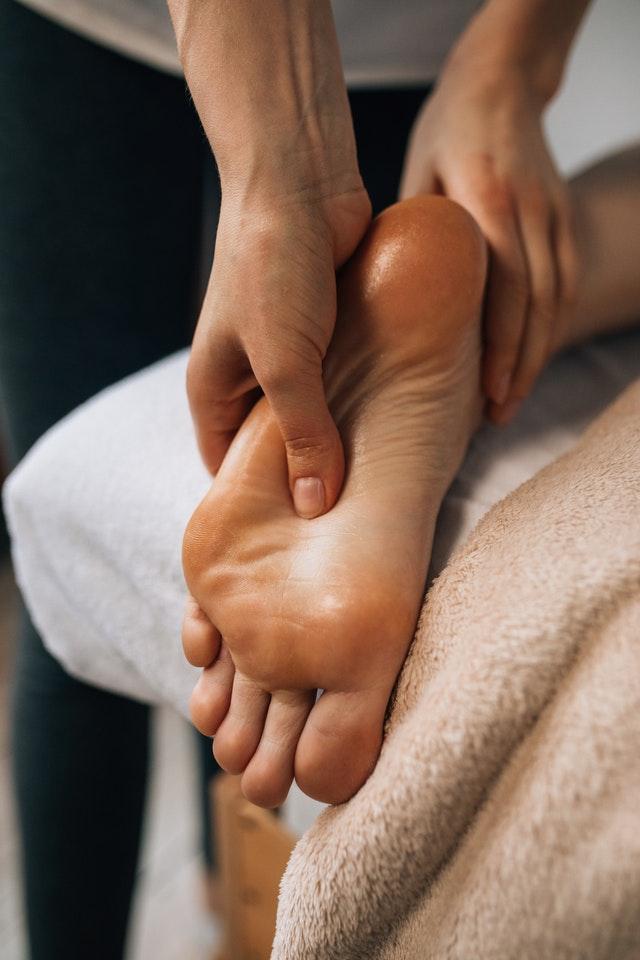
Peripheral neuropathy affects around 50% of persons that have type 2 diabetes. If you have type 2 diabetes, the nerves of your body’s extremities (feet and hands) are likely to be damaged by high blood glucose over time.
There is a variety of symptoms caused by damaged nerves ranging from mild to extremely debilitating. Further, the symptoms of diabetic neuropathy vary from one individual to the other. Some of the symptoms associated with diabetic neuropathy include:
- Cramps
- Diabetic foot pain
- Tingling
- Burning sensations
- Loss of feeling (numbness)
- Loss of balance
- Increased sensitivity to touch
If you are diagnosed with diabetic peripheral neuropathy, good foot care is essential for you. Good foot care is vital for you since it can likely help in the following:
- Slow down the progression of your nerve damage
- Reduce or get rid of the pain
- Prevent complications that may happen further such as infections, diabetic foot ulcers, and in the worst-case scenario, lower-limb amputations.
Diabetes reduces blood circulation in the feet.
You are at an increased risk for peripheral artery disease if you have diabetes. This is because a sticky plaque of fats and cholesterol builds up on the walls of your arteries.
The build-up on the walls of your arteries can slow down blow circulation drastically, and this can lead to the lack of delivery of oxygen and nutrients to your lower limbs and feet. You are at risk of increased foot infections, foot ulcers, and even foot gangrene with PAD.
Apart from preventing most complications caused by peripheral artery disease, diabetic foot care can also help boost blood circulation and decrease swollen feet.
Diabetic Foot Care Guidelines
Diabetes is harmful to your feet, and if you have it, poor diabetic foot care can result in having to amputate your toes, foot, or even your leg.
You might not notice an infection from a small cut or blister until it is too late. If you have either type 1 or 2 diabetes, you must adhere to a strict daily schedule at home to care for your feet. This is especially true if you have been identified as having peripheral artery disease or diabetic neuropathy.
Diabetes foot care guidelines that can help you prevent the most serious complications
1. Keep your HbA1c below 7%
Your blood sugar level has the utmost impact on the health of your feet. When you have diabetes, and it is not managed properly, and your blood glucose levels are not controlled, you are likely to have diabetes-related foot complications.
Therefore, if you want to stay away from foot problems, the first rule is to ensure that your HbA1c is kept below 7% and your blood sugars are in the range.
Following a healthy lifestyle, taking your medications, balancing your meals, exercising daily, and asking your doctor for advice regularly is the best way to keep your HbA1c below 7% and your blood sugars in range.
2. Get a diabetic foot exam once a year.
Medicare will pay for yearly foot tests for diabetic peripheral neuropathy patients. A podiatrist, your general practitioner, or another healthcare professional will perform a series of painless and risk-free medical tests.
Diabetes foot exams can identify issues that you might not be able to notice on your own.
It is advisable that you see your doctor immediately if you notice or feel any of the following apart from your yearly diabetic foot exam:
- If you have pain in your feet or legs
- Prickling sensations, burning or tingling
- Numbness or loss of sensation
- Should you notice any deformities on your toes or feet
- Loss of hair
- Cracks on your skin
- Any changes in your skin color
- When your toenails turn yellow
- Fungus infections
- Ingrown toenails, ulcers, sores, or blisters
You can considerably reduce the risk of foot problems and their aggravation through early diagnosis and prevention.
3. Inspect your feet daily
Diabetic neuropathy can lead to cuts and wounds staying unnoticed because of possible decreased sensation (numbness) in your feet.
Therefore, it is advisable that you inspect and check each side of your feet and toes on a daily basis. When inspecting your feet, you should check if your feet have redness, blisters, cuts, swelling, nail issues, bruises, calluses, and many more.
While inspecting your feet, it is also essential to check in between your toes and under your feet. You can use a mirror if you are physically unable to do so.
Additionally, if you have diabetes, you should never try to treat a foot problem by yourself. You should consult your doctor for advice if you notice anything unusual.
4. Gently wash and dry your feet.
If you want to avoid diabetes-related foot problems, then foot hygiene is a must. It would be best if you washed your feet daily in lukewarm water.
Using cold or too hot water is not advisable since it could do damage to your skin. While washing your feet, you should use a gentle foot wash or a mild soap. To dry your feet and between your toes, you should gently pat or blot your feet.
5. Wear shoes for diabetes & neuropathy
You can help prevent and alleviate the most common diabetic foot problems by donning diabetic shoes.
Diabetic shoes are different from regular shoes since they are medically and professionally designed for this purpose. These shoes are equipped with unique features that prevent and alleviate problems related to common diabetic feet.
The features include the protective inner linings that help in preventing your foot from blistering and irritating. Additionally, for improved foot stability and overall balance, diabetic shoes have enhanced foot support and extra-cushioning.
The shoes have a non-binding design which aids in the promotion of blood circulation to your foot. When it comes to neuropathy shoes, they are even more protective than diabetic shoes despite having almost similar features. Depending on your needs, you should consider having at least a pair.
Moreover, the pair of shoe fitting is essential. You should ensure that the diabetic shoes or neuropathy shoes are not too loose or too tight.
You can confirm this by inspecting the shoes before inserting them into your feet. Last, you should also ensure that there are no pebbles or foreign objects in the shoes that could harm your feet before wearing them. Too tight shoes with foreign objects or pebbles may lead to your diabetic feet getting swollen.
6. Consider socks for people with diabetes.
Socks are also essential in playing a role in diabetes foot care. You should change your socks on a daily basis if your feet sweat a lot to ensure your feet stay dry.
Additionally, the socks you wear should also be dry. If you have cold feet, especially at night when sleeping, it is recommended to wear socks to keep your feet warm. The socks also should not be too tight to compress your feet.
Diabetic socks have unique features. Some of the impressive features of diabetic socks include their soft elastic or no elastic at all. This will help in allowing blood flow to your feet by not constricting your leg and blocking blood flow.
These socks also will ensure that your feet stay in a dry, healthy environment thanks to the anti-bacterial fabrics used in making them.
The breathability of the socks will allow optimal airflow to your feet, while the moisture-wicking features in the socks will help in getting rid of any sweat and moisture hence leaving your diabetes feet dry and comfortable.
Furthermore, diabetic socks are designed to prevent blistering and irritations on your feet since they have extra padding for extra comfort and seamless construction.
7. Moisturize your feet
Your skin can be affected by dehydration caused by high blood sugars. The effects of dry skin include skin peeling, crackdown, or itch, which may cause further issues to your diabetic feet, such as foot ulcers and infections.
You should apply moisturizing lotion after washing your diabetic swollen feet every time after washing if you have dry skin on your feet. However, you should not apply moisturizing lotion between your toes since it may cause a fungal infection.
Further, there are moisturizers and foot care products of poor quality, and using them can be harmful to your diabetic feet.
Diabetic skins are fragile, and using poor quality products and moisturizers that contain chemicals can be too aggressive for your skin despite also not being efficient.
Therefore, it is advisable that you go for diabetic creams and lotions that have been carefully formulated. Only if you have dry skin should you use a moisturizer. If not, and your skin does not feel rough, you should wash and dry your feet each time after washing.
8. Keep your feet dry
Despite your feet needing to stay dry if you have diabetes foot issues, the skin of the feet should always stay moist. Dry feet are necessary with diabetic swollen feet since moist areas aid the development of fungal and bacterial infections. After being under the rain or snow, you should not let your feet stay wet for too long. If necessary, you should wear or use waterproof shoes.
You should choose appropriate socks and shoes with moisture-wicking and anti-bacterial fabrics if you tend to have swollen diabetic feet. It would be best if you changed your socks any time, they were wet.
9. Keep your feet warm.
People with diabetes tend to have cold feet because of poorer blood circulation. Generally, skin irritation, dryness, and foot problems are likely to increase due to cold.
Therefore, if you have diabetes feet, you should ensure that your feet are kept warm. However, they should not be too warm since too much warmth causes sweat.
It would be best if you chose socks with quality materials such as Merino wool, Alpaca fibre, or thick bamboo fibers during the winter and cold seasons to keep your feet warm. If needed, wear socks at night to keep your feet warm.
10. Trim your toenails properly
You may have foot issues such as ingrown toenails that can easily get infected if you trim your toenails badly. Additionally, at least once every week, you should inspect and clip your toenails.
- After taking a bath or shower, when your toenails are softer and more flexible, trim them.
- Make a straight cut across with a nail clipper. Avoid trimming the sides or rounding the corners.
- Avoid having your toenails cut too short. Leave around one millimeter of white showing at the tip of your nail.
- Never pull the cuticles back. They aid in preventing the entry of bacteria and infection into your nail matrix.
- To avoid jugged edges after clipping, smooth your nails with a nail file.
Can diabetics soak their feet?
You can help calm down neuropathy symptoms by soaking your feet in a basin filled with warm water or in a foot spa.
An excellent way to incorporate natural pain-relieving and soothing ingredients such as Epson salts, essential oils for neuropathy, medicinal herbs, or cannabidiol (CBD) products are to soak your feet in a basin of warm water or foot spa.
In conclusion, foot soaking is great, and it can help persons living with diabetic neuropathy foot pain. However, foot soaking is not a treatment for diabetic neuropathy.
Soaking your feet cannot repair damaged nerves but can relieve diabetic nerve pain. Any way to reverse diabetic peripheral neuropathy has not been found or proven scientifically up to date.
Therefore, soaking your feet in Epsom salts or apple cider vinegar has a well-appreciated pain-relieving effect you would be fond of, but it would not reverse neuropathy.
Foot soaks can help relieve nerve pain.
You can reduce nerve pain in your diabetic nerve pain feet by soaking them in warm water.
Additionally, while soaking and bathing your diabetes feet, you can take the opportunity to try some other home solutions for neuropathy.
You can do this by adding Epsom salts, medicinal herbs, or essential oils. You can be provided instant relief for neuropathic pain through warm water baths and foot soaks.
Warm water baths and foot soaks have proven to do the following:
- Relieve pain
- Reduce stress
- Relax muscles
- Increase blood circulation
Foot soak is no danger for persons with diabetes or neuropathy if used reasonably and wisely. However, you should be aware that your feet are fragile and prone to multiple conditions once your feet are affected by neuropathy and diabetes.
Therefore, to avoid injury, you should:
- The damaged nerves in your feet are not reliable enough for judging water temperature, and you could burn your skin without even noticing it. Therefore, you should always check the water temperature with a thermometer.
- Dry your feet but gently soak, particularly in the space between your toes. This is because you can easily get wounded and infected if you have wet skin blisters.
- Limit your soak time. More than 30 minutes of foot soaking time, three to four times per week, can weaken your skin’s barrier of defense.
- Take care when adding items to your foot bath. Some online foot soak recipes for neuropathy are too forceful and could harm you. It is advisable that you consult your doctor for advice first.

Blood Sugar Fasting
A blood sugar fasting test measures your blood sugar (glucose levels) when you haven’t eaten for at least 8 hours.
The glucose level in your body is always expressed in mg/dL. The present glucose amount in your blood does fluctuate day and night.
Generally, metabolism is essential in our day-to-day activities, and the level of blood glucose is maintained by our body for this activity. When you have a healthy body, your fasting blood sugar readings should be between 90 to 100 mg/dL.
However, your fasting blood sugar levels may fluctuate; at times, the readings may go high and low. The fluctuating fasting blood sugar readings in your body, even if you are healthy, may be caused by various factors.
Fluctuating blood glucose levels that you may experience are healthy condition signs that require or need attention.
Additionally, there are multiple Diabetes Reversal Methods and medical attention that you can use to keep your fasting blood sugar at healthy levels.
Why does Blood Glucose Level Rise in Diabetes?
After eating, your blood sugar levels are always high. This is due to the fact that the food you have eaten is being released into your bloodstream, and for this to happen, it must be converted to glucose.
As the food is converted to glucose, the glucose level signals your pancreas, which then releases insulin.
Your body needs insulin to help in the absorption of glucose. This will reduce your blood glucose levels and return to normal. The cell absorption process is essential in regulating or maintaining normal glucose levels.
However, if you have diabetes, your body becomes resistant to insulin, leading to insulin deficiency.
With you having insulin deficiency, your body loses the capability to absorb blood glucose. This will lead to you having diabetes due to high blood glucose levels.
There are various health condition issues that are associated with diabetes that you may have. Some of the problems you may have by being diabetic include thyroid, stress, muscle weight loss, acidity, low energy levels, insomnia, and many more.
Further, if your high blood glucose levels persist for long, it may cause damage to your nerves, kidneys, eyes, and even heart. Luckily, diabetes is reversible.
You will need to observe and maintain correct changes in your exercising, eating habits, sleeping patterns, and stress management.
It has been proven that over 10,000 diabetic patients have reversed their diabetes by following the right changes.
You must maintain good fasting blood sugar readings at some acceptable values if you have diabetes.
You can attain some of these typical accepted values by having and maintaining a healthy lifestyle which will help in reversing your diabetes.
Moreover, it is also important that you follow a sustainable diet plan which includes having staple food readily available in your kitchen. Supplements should be included in your diet.
Healthy Individual Normal Sugar Level (Fasting & After Food)
Blood sugar levels are also referred to as blood glucose levels. Your blood glucose levels may be normal, high, or low. Generally, the best time to measure your fasting blood sugar levels should be around 8 hours after eating.
When you are healthy and not diabetic, your normal fasting blood sugar range should be > 70 mg/dL. And your blood sugar readings should range between 90 to 100 mg/dL. two hours after eating if you do not have diabetes.
Factors that may cause your blood glucose levels to change during the day
Throughout the day, your blood glucose levels change.
There are multiple factors that may cause your blood glucose levels to change during the day, and they include:
- The variety of food we eat during the day. For example, your blood sugar levels might increase during the day if you eat rich-carb food and high-calorie food.
- The quantity of food. Your normal blood sugar readings may increase if you eat too much during the day.
- Physical activities. Your blood glucose levels are likely to increase if you do less physical activity during the day, while heavy and rigorous work and physical activity during the day reduce your blood sugar levels.
- There are certain medicines that may have an impact on your blood glucose level during the day.
- Your normal blood sugar levels are likely to change if you have medical conditions such as hypoglycemia, diabetes, and liver disease.
- Your good fasting blood sugar level is likely to drop due to alcohol consumption.
- You are likely to suffer from Type 2 Diabetes if you are smoking.
- Age Matters! There are increased chances of you having diabetes as you age. This is because insulin tolerance in your body reduces as you grow old.
- Your normal blood sugar levels can increase due to mental and physical stress.
- You are likely to have low blood glucose levels during the day due to dehydration.
The good thing is that most of these listed factors that may cause your blood sugar levels to change during the day can be solved.
All you have to do is ensure you are in the correct surroundings with the right guidance. Additionally, suppose you want to reverse your diabetes.
In that case, you also need to be doing what other diabetic patients who are on a similar journey as you are doing in the right environment and guidance.
Children and Teens with Diabetes – Normal Blood Sugar Levels According to Age
There is variation in fasting blood sugar levels in children from the time they wake up to the time they have taken their meals. Therefore, it is essential that you monitor your children’s normal blood sugar levels regularly.
The normal blood glucose levels for children at the age of six should range from 80 to 200 mg/dL. A blood sugar test is a must if your child has complaints of hypoglycemia, especially in the middle of the night.
The blood glucose level reading of between 80 to 180 mg/dL. is considered healthy if your kids are aged between 6 to 12.
However, it has been found that normal blood sugar level reading increases after meals for kids around this age. Therefore, to ensure they have a healthy glucose level at bedtime, limiting their snack intake before sleep is essential.
Blood glucose level reading of between 70 mg/dL. to 150 mg/dL. is considered healthy for teenagers. One of the reasons for irregular blood glucose levels in teenagers could be heredity.
Mood swings, stress, and lifestyle issues are common among kids around this age. These are the critical challenges in managing healthy blood glucose levels in teenagers.
Despite managing blood sugar levels in teens being critical, it is possible. You can regulate blood sugar levels in teens by implanting good eating, sleeping habits, and other lifestyle modifications at the right age.
Introducing the right lifestyle modifications to teens at the right age will help them in their entire life. Besides, as teenage, motivation and a little push are essential in regulating sugar levels.
It is alarming, and your children will require medical attention if their blood sugar level readings are 180 mg/dL.
Random Blood Sugar Level Chart
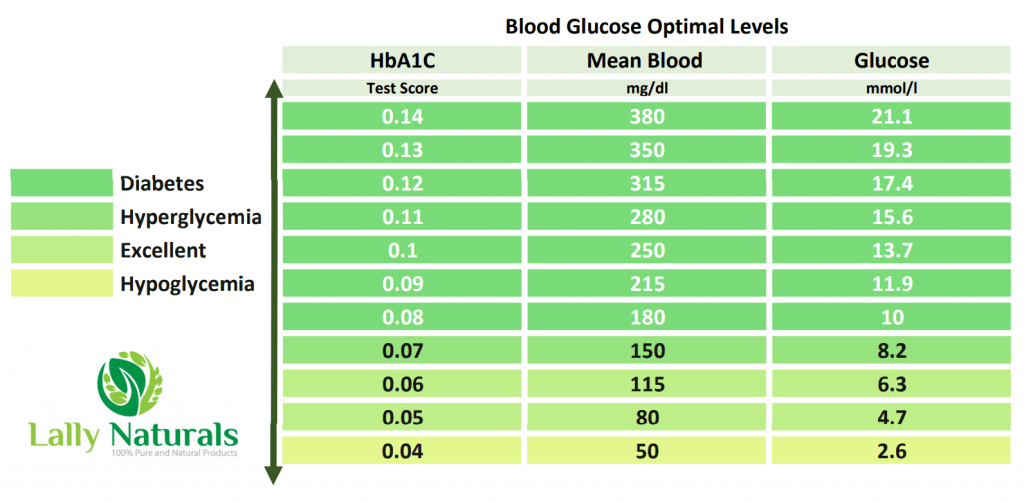
There are scheduled blood sugar testing durations during the day. However, you can still do random testing at any time of the day.
Random blood sugar testing should be done outside the regular testing timetable.
When you do random blood sugar testing, it will confirm diabetes if you do the random test during and after treatment of diabetes.
When the blood sugar level reading is 200 mg/dL or more, then it is an indication of diabetes mellitus.
Checking random blood sugar levels is the main aim of an RBS test. When the range is 200 mg/dL or greater during an RBS, it clearly indicates diabetes.
Doing a random blood sugar test will help in the timely treatment of diabetes via monitoring during and after treatment. It is recommended that you do a random blood sugar test if you have the following symptoms:
- Unexpected weight loss
- Blurred vision
- Constant dehydration and dry mouth
- When your wounds take time to heal
- Urinating recurrently
Healthy Normal Sugar Levels in Diabetic Adults (Men or Women)
Your blood sugar level should range between 100 mg/dL to 180 mg/dL the entire day if you are a diabetic person above 20 years of age.
To avoid diabetic complications, your fasting blood sugar range should be between 70 mg/dL to 100 mg/dL.
Your blood sugar levels should be between 100 and 140 mg/dL at bedtime to avoid diabetic complications.
Normal blood sugar readings for women in the blood sugar levels chart should be between 100 to 140 mg/dL at bedtime. It is considered dangerous and requires medical attention if your blood sugar readings at bedtime are> 70 and 180 mg/dL.
When your body has insulin deficiency or cannot use the insulin properly, then hyperglycemia occurs.
Some of the common signs of high blood sugar levels include:
- You experience fatigue
- Abnormal thirst
- Urinating frequently
- Difficulty concentrating and headache
- Cloudy vision
- Unexpected weight loss
Hyperglycemia can lead to diabetic ketoacidosis if left untreated. Diabetic ketoacidosis is a life-threatening condition.
Besides, it can lead to you having heart-related complications, kidney issues, and liver complications.
Remedies for High Sugar Level
You should seek medical advice and take medicine if your blood sugar level is between 180 to 250 mg/dL.
You should also avoid sugary items and processed foods and cut off a fast-acting carb diet.
You should seek immediate medical attention if your blood sugar level is >250 mg/dL.
If your blood sugar level is > 250 mg/dL and you do not seek medical attention, it may lead to you having a coma and high ketones in your blood.
Therefore, you should take a ketones test and get insulin therapy once you find your blood sugar levels are >250 mg/dL.
You are advised to do the following if you experience high sugar levels on a regular basis:
- Maintain a low sugar food diet with a low glycemic index
- Avoid taking fruit juices and processed foods.
- Maintain a healthy lifestyle and do mild exercises.
- Consult medical experts for recommended insulin dosages
- Take medication in time.
- Regular monitoring of your glucose levels
Many diabetic persons cannot follow the changes they need to make in their diet or daily routine despite being aware of them for multiple reasons. The most common reason is a lack of motivation and proper knowledge.
FAQs:
1. What is a normal blood sugar level after fasting for 8 hours?
Suppose you do not have diabetes and have fasted for at least 8 hours. In that case, your fasting blood sugar level must be below 100 mg/dL to be considered normal if you are an adult.
2. Is fasting sugar of 110 mg/dL normal?
A fasting sugar level of under 100 mg/dL is considered normal. A person with prediabetes has a fasting blood sugar level between 100 and 125 mg/dL.
If your fasting sugar level is 126 mg/dL or above, you have diabetes. Prediabetes is fasting blood glucose levels between 110 mg/dL and 125 mg/dL.
Normal blood sugar levels are less than 110 mg/dL, and diabetes is defined as levels more than 126 mg/dL.
3. What is a good blood sugar level in the morning?
In the morning, before taking your breakfast, it is advisable that you keep your fasting blood sugar level readings in the range of 70 – 130 mg/dL.
Additionally, your blood glucose readings at other times must range between 70 – 180 mg/dL.
Bottom Line
Depending on your medical condition, your blood glucose levels can go high or low. Therefore, it is advisable to visit an endocrinologist and get professional advice about the fluctuations in your blood glucose levels and the reasons for them.
You should also monitor your blood glucose levels and keep them normal if you have diabetes. Doing this will help you avoid diabetic complications and lead a normal life.
The diabetes reversal method using diet, exercise, and lifestyle step by step is a great way of keeping your blood sugar levels healthy.

Are Figs Good for Diabetics
Are Figs Good for Diabetics? According to the USDA (United States Department of Agriculture), figs are not only loaded with fiber, but they can also be a great aid in helping to manage blood sugar levels.
It is also one of the best all-natural nutritious foods for diabetics. With that being said, here are some interesting facts about diabetes and figs.
Nutritional Value of 1 Fig
First off, when you do your research, you will find that the nutritional value of 1 fig (weight 8.4 grams) is as follows.
- Sodium: 1 mg
- Fat; 0.1g
- Sugars: 4g
- Fiber: 8g
- Carbohydrates: 5.4g
- Protein: 0.3g
- Calories: 21
Figs are also packed with a wide variety of essential vitamins and minerals including the following:
- Vitamin A, C, K and B
- Triterpenoids
- Alkaloids
- Potassium
- Zinc
- Copper
- Magnesium
- Iron
As you can see, figs are a healthy fiber-rich fruit so it is an excellent choice for helping reduce blood sugar levels. This fact is also true for fig leaf extracts since it can be used in improving the body’s insulin sensitivity.
Good Choice for the Entire Family
Keeping your family healthy and free from diseases like diabetes is a huge challenge in today’s current society.
Therefore, it is important to understand how the family should eat, particularly when it comes to what foods raise blood glucose and those that do not. And, as far as eating fruits like the fig, you may want to add this fruit to the breakfast menu in your home.
How Do Figs Reduce Blood Sugar levels?
The question is, how do figs reduce your blood sugar?

Based on information published by healthshots.com, there is a science behind how this fruit is absorbed into the body. Because of the fiber, potassium, and chlorogenic acid that is present in this fruit, it actually reduces the blood sugar level instead of causing a spike in insulin.
Of course, it is important, however, that you always eat this fruit in moderation to keep from going overboard. For instance, if you eat too many figs, it may cause a spike in your insulin.
How Many Figs Can You Eat in a Day?
So, how many figs can you eat in a day?
One of the main keys to adding any fruit comfortably to your diet is to know exactly how many you can actually eat. This is because the nutritional value and sugar content usually vary from one fruit to the next.
As such, when it comes to eating diabetes figs, it is one of the top picks or best fruits for diabetics on the list (i.e. low to moderate on the glycemic index).
This is only true when you are eating a moderate amount. Therefore, based on its sugar content and other related factors, you should only eat 2 to 3 figs a day.
If you eat more than this amount, figs may cause several serious health problems including gaining weight, digestive issues, and high peaks in blood glucose.
Are figs Gluten Free?
Yes, figs are a gluten-free fruit. In fact, virtually all fruits are considered to be gluten-free.
Can People with Diabetes Eat Dried Figs?
Today, there is a huge amount of information posted online about diseases like diabetes. Some of which, of course, address what foods diabetics can eat and what food should be avoided.
In some cases, this information may contain myths about figs that may be passed on to others. For instance, in the diabetic community, most people think that dried figs cannot be eaten, even though it is simply not true. You can enjoy eating dried fresh figs and dried figs, too.

So, if you want to add California Dried figs as a part of your daily diet, you absolutely can.
Typically, one of the main issues that many people are concerned about is the high sugar content in the foods that they eat. Yet, this is not the only factor that should be considered, especially when you are making smart food choices for diabetics.
With this in mind, here are 3 of the most essential nutrients for controlling and managing your blood sugar levels properly.
- Protein
- Fat
- Fiber
Each of these nutrients is key to ensuring the body digests food longer. As compared to eating sugary foods alone, there is no quick spike in your insulin. Simply put, every time that you eat, you need a well-rounded meal that consists of fat, fiber, and/or protein.
Dried Figs Contain Fiber and Natural Sugar
Depending on the type of dried figs that you are planning to eat, there is at least 19 to 26 grams of sugar content. It is also important to note that dried figs do not contain refined or added sugar. And, even though sugar is sugar, figs are packed with essential nutrients that are good for your health.
So, if you want to eat figs (sugar) and yogurt (protein) together as a snack, you can. Actually, this combination can be a delicious addition to your breakfast. Or, if you choose to do so, you can eat yogurt and figs as a balanced sugar-friendly snack.
3 Ways to Eat Dried Figs to Manage Your Blood Sugar
1. Walnuts and Dried Figs
This is a great safe way for people who want to properly manage their blood sugar levels. Based on research studies, nuts combined with dried fruit are not only good for diabetics but also for preventing type 2 diabetes.
2. Plain Greek Yogurt and Dried Figs
As referenced above, plain Greek yogurt and dried figs can be the ideal mid-day snack for a boost of energy. Or, some people may eat plain yogurt with dried figs for breakfast.
3. Add Dried Figs to a Charcuterie Board
A charcuterie board with veggies, meats, cheeses, and dried figs is also a great way to share nutrient-dense snacks.
Summary
Figs are a good nutrient-dense source of food for diabetics. When eaten in moderation, it can also help you control your blood sugar levels. You can add figs to plain yogurt for breakfast. Or, you may eat this combination as a late-night snack. Either way, you can eat these treats without spiking your insulin.
Also, before you add figs to your diet, it is important that you consult with your physician. Your physician can help you to make smart choices, specifically when it comes to monitoring blood sugar levels and healthy eating.

Ways to Reduce Blood Sugar
According to a National Diabetes Statistics Report in 2020, an estimated 34.2 million people in the U.S. have been diagnosed with diabetes. The prevalence of diabetes is also constantly rising in both low-income and middle-income populations. Even though this rise in number is actually frightening to think about, there are many different things that people can do to combat this disease. One of the most important is to make specific types of lifestyle changes. And here is why.
Diabetes and prediabetes are caused by complications of high blood sugar levels over time. Actually, when blood sugar (blood glucose) levels remain high for a certain amount of time, it can lead to dangerous consequences including the loss of life.
Therefore, it is important that everyone understands how high blood sugar levels affect the body and the health risks involved in failing to treat this condition properly.
So, let’s get started by discussing the signs and symptoms and other related information that can help to reduce blood sugar levels fast.
Signs and Symptoms of High Blood Sugar
Unlike high blood pressure levels, high blood sugar is not a silent killer. In fact, in all actuality, there are many signs and symptoms that indicate that your blood sugar (glucose levels) are high. Here’s what to look out for.
- Thirst increases due to higher amounts of sugar in the blood
- Extra water in the body from this thirst will also increase the need to urinate frequently
- Eye vision is blurry
- Even though the hunger increases, the person begins to lose significant amounts of weight
- Increase in fatigue and tiredness (sugar in the body does not convert to energy but remains stored inside the blood)
- Increase infections and the wounds are slow to heal
- Feeling of numbness in the feet and other parts of the body
- Chronic gastrointestinal problems and heart disease
- Kidney damage
All of these symptoms and more usually indicate that the sugar levels in the body are too high and treatment is needed. To get ahead of these problems, it is important that you are aware of your own health status. For instance, your blood glucose can be tested regularly in your home.
Or, you may want to visit your physician to follow up on the signs and symptoms caused by these issues.
When visiting a physician, they may order one of the following tests to check for prediabetes or diabetes.
- A1C – fasting blood glucose
- OGTT – Oral glucose tolerance test
How Can You Reduce Your Blood Sugar Levels Fast

Once the testing for your blood glucose has been tested at home or at your physician’s office, you may need to take action right away. Based on your set of circumstances, there are a number of different things that you may be required to do.
- Under Medical Care of a Doctor
If you are already under the care of a medical physician, it is important that you follow the instructions closely that were given to you. For instance, you need to make sure that you are taking your medication as prescribed without skipping doses.
Since the approach that your physician uses may be different from other patients, you need to know exactly what to do in certain situations. Typically, whenever a diabetic patient skips a dose of their medications, the doctor may instruct them to take that dose right away.
Whatever the situation, it is important that you ask these questions in advance before you live their office.
- Drink Water
In some situations, lowering your blood glucose levels may be as simple as drinking water. This is because water helps to dilute the sugar in the blood. You should also avoid drinking sugary and low calorie beverages, especially since these beverages can increase glucose levels in the blood.
- Exercise
Though there are many effective ways to lower your blood sugar, some are much more effective than others. For example, if you want to reduce your blood glucose levels quickly, physical activity is extremely effective.
In fact, if you want to keep your blood glucose levels in check, you should go walking regularly. Or, you may choose to go to the gym. As a general rule, at least 15 minutes of cardio exercise can help to regulate these numbers. Also, before starting any strenuous exercise program, you need to consult with your physician.
- Eat Protein
Eating protein is ideal for helping to keep your blood sugar glucose levels down. Therefore, you may want to add protein to your diet as a snack (i.e. hard boiled eggs, almonds, cottage cheese, or low-fat cheese). Here are some of the primary benefits of making these dietary changes.
- Protein helps to reduce cravings
- Satisfying
- Eating more protein is also one of the best ways to lower blood sugar
- Digests in the body slower than sugary beverages and sweets
Ways to Reduce Blood Sugar in Pregnancy
Some women are at risk of suffering from a wide range of medical conditions when they are pregnant. One of the most notable and problematic is gestational diabetes. While not all women are at risk of developing gestational diabetes, there is a certain part of the population that is. Here is a profile of the women who are more at risk than others
- Women who are obese
- Specific races: Black, Asian, Hispanic or American Indian
- 25 years or older when you are pregnant
Gestational diabetes can also lead to a variety of different complications, including affecting the baby’s health (i.e. born with low blood sugar). Therefore, it is important for women to exercise regularly and eat the right nutritious foods to protect the baby and their own health.
According to information published by AACE, when pregnant women are diagnosed with gestational diabetes, specific goals must be established to protect their health. Under the guidance of the ADA , here are some of the key recommendations that should be followed.
- Upon getting up in the morning, the fasting level should be in the range of 60 to 90 mg/dl
- Prior to eating a meal, the range should be 60 to 90 mg/dl.
- After eating a meal ( i.e.1 hour), the ranges should be between 100 to 120 mg/dl
To control blood sugar levels in women with gestational diabetes, the same approach is used in the management of type 2 diabetes. The physician will also prescribe the following to these patients.
- Eliminate sweets and processed foods from the diet.
- Select healthy food choices like fruit, vegetables, and whole grains. Women with gestational diabetes must also practice portion control since these foods will also increase blood sugar glucose levels.
- Whenever physician feels that it is safe for their patients, they should also recommend a certain amount of physical activities like walking and swimming.
Based on the doctor’s prescribed treatment, the patient should take oral sugar medication or insulin injections.
Foods to Avoid When Your Blood Glucose is High
Eating the right types of food is an essential part of remaining healthy and active. Particularly, if you have been tested for insulin sensitivity and your blood sugar is high. In fact, if you are experiencing problems in this area, here are foods that you need to avoid.
1. Sugary Snacks for Treats
- You should always pay close attention to the snacks that you eat. This is especially true if you are thinking about eating any of the snacks in the following list.
- Ice cream and cookies
- cakes, pies, and muffins,
- sweetened yogurt sweetened
- Doughnuts
- Onion Rings
2. Beverages with sugar
- Drinking beverages with sugar can also lead to high levels of glucose in the blood. Therefore, it is normally time to avoid drinking these beverages with sugar.
- Energy drinks and sports drinks
- Coffee and Tea with sugar
- Soft drinks with sugar
- Fruit Juices
3. Foods with White Flour
Do not eat foods that have been made with white flour-based products. Some of the more commonly known foods that you should avoid include the following:
- Rolls and English muffins
- White Bread
- Pretzels and crackers
4. High Carb Grains
Refined grains are high in carbohydrates, which are foods that spike your insulin and increase your blood glucose levels. Therefore, you need to make sure to avoid eating.
- Rice
- Pasta
- Refined breakfast cereals
- White boiled potatoes
5. Fried Foods
To keep control of your blood glucose level properly, it is also best to eliminate fried foods. Instead, it is normally best to bake and broil your foods. For instance, here are some foods that need to be baked and broiled instead of fried.
- Chicken
- Fish
- Potatoes
6. Processed Meats
As with many other healthy diets, processed meat is also off-limits and should be avoided at all costs. This is because some processed meats will often contain higher amounts of fats, preservatives, and salt.
- Pepperoni
- Sausage
- Salami
- Ham
- Luncheon Meats
- Hot dogs
Foods You Can Eat on Your Diet
Even though it may appear to be a lot of foods that you cannot eat, there are some foods that can help to regulate your blood glucose level properly.
You need to know, however, how to mix and match them with your meals. For instance, you should avoid eating refined carbs (i.e. sugars and starches) only as a meal. Instead, you may want to eat refined carbs with one of the following dishes.
- Veggies and whole grains
- Healthy fats like nuts and peanuts
- Lean proteins such as chicken, fish, egg whites, and tofu
Ways to Lower High Blood Sugar Quickly
First off, you need to know that there is no food that can lower your high blood sugar levels instantaneously. This is primarily because it normally takes about 10 to 20 minutes for your food to be fully digested and released into your bloodstream.
On the other hand, if you are looking for foods that will have a quick effect on lowering your blood glucose levels, you may want to incorporate the following foods into your diet regimen.
- Peanuts and other low-carb nuts
- Tuna and Salmon
- Avocado
- Hard-boiled eggs
- Plain Greek Yogurt
- Unsweetened Chocolate
Exercise and Healthy Diet is Good for Lowering Blood Sugar Levels
Even though a physician may prescribe injections and other types of diabetic medications, this is not the only solution to lowering your blood sugar levels.
In fact, if you want to lower your blood sugar levels with all-natural solutions, you may want to consider the positive effects of eating healthy and exercising have on the body.
For instance, if you are looking to take this approach, here are some effective things that you can do.
- Exercise Regularly
Unfortunately, one of the worst things that people can do is lead a sedentary lifestyle.
Actually, to combat this problem, it is best to increase your activities. From taking a short walk to break up the sedentary time to signing up for dance classes, kickboxing, tennis, basketball, or golf, there are so many different activities that you can participate in.
To start, you may want to set a specific goal that you can commit to. Just adding 30 minutes of activities 3 or more times a week, can help you to manage your blood sugar levels properly.
- Eat a healthy Diet Regimen
As mentioned earlier, you need to make sure that you are eating a diet that excludes added sugars, refined carbs, and high-carb foods. By changing your diet, you can lower your blood sugar levels naturally. Here are some of the foods that you should incorporate into your regular diet regimen.
- Vegetables
- Cut portion sizes in half
- To control ingredients, eat less at restaurants
- Replace sugary beverages with water
- Bake, grill, and steam foods versus frying with lots of fat
- Eat lots of vegetables
- Reducing High Blood Sugar by Using Effective Home Remedies
Even though exercise and eating the right foods can help you to manage your blood sugar levels properly, there are other things that you can do to keep things under control. In fact, there are some home remedies that are very effective. Here are 5 of the most beneficial.
- Get adequate Sleep
Getting an adequate amount of sleep at night is essential to keeping your blood sugar levels under control. Just like poor food choices can raise glucose levels in the body, the lack of sleep can cause a variety of issues in the body, including hormonal changes and high blood sugar.
- Apple Cider Vinegar
You may be surprised to know that apple cider vinegar is also a good aid for reducing high blood sugar. Based on information published by the Journal of Diabetes Research, vinegar is great for increasing glucose uptake by muscles and elevating insulin sensitivity.
- Chromium
A deficiency in chromium can lead to unnecessary issues with high blood sugar. Therefore, it is important that you eat foods like spinach, oysters, and cheese broccoli since they are excellent sources of chromium. Also, if you choose to do so, you may want to add this supplement to your daily diet regimen.
- Stress
Most people know that bad stress has a devastating effect on the body. Just like not getting enough rest, stress can also raise your blood sugar level greatly. This is also why some people may perform deep breathing exercises to help eliminate the stress that they feel.
- Immunity
Another key to reducing blood sugar glucose is to strengthen the immune system. You can do this in a number of different ways including:
- Taking vitamin C supplements regularly
- Washing your hands frequently
- Eating foods like bell peppers, oranges, and leafy greens to get an adequate amount of Vitamin C
Monitor Your Blood Sugar Levels
Learning how to manage your blood sugar levels regularly is one of the best ways to prevent high blood sugar levels. As you keep track of the foods that you eat, you will also see how your body reacts. There are also diabetic apps available to assist you in making the appropriate behavioral changes.

Do Diabetes Medications Cause Weight Gain?
Diabetes Medications – In the USA alone, a little over 10% of all people have some form of diabetes. For those who don’t know enough about diabetes, the long and short of it is that this occurs when your body can’t produce enough insulin.
When the body is short on insulin the body’s blood glucose (blood sugar) can rise to levels that are unsafe for the body. Out of the many people who suffer from diabetes, there are quite a few who have Type 2 diabetes.
Despite the serious nature of diabetes, there are many ways to treat this condition. One thing that people with diabetes do need to understand is that their lifestyle needs to change.
But there are also medications and even a few remedies that do work when it comes to keeping one’s glucose levels stabilized. One of the main concerns for anyone however is finding the right treatment, since there are plenty of medications that can have serious side effects.
Some medications can affect a person’s weight, which is not intended but can be a negative side effect. Not all diabetes medications will affect a person’s weight, as the body chemistry of each person is different and needs to be taken into account. This article has been written to discuss the different medications used for diabetes and how they can affect those who need them.
Why do some diabetes medications cause weight gain?
The average diabetes medications tend to cause fluctuations in weight by affecting how sugar is processed and used within the body.
Typically, insulin will help the body turn sugars that are derived from food into energy that will help to fuel the body. Insulin makes it possible for sugar to break down in your body so that it can be utilized efficiently. This process can help to lower your blood sugar.
When there’s too much sugar in your blood, the insulin in your system sends a signal to the liver to convert the sugar into fat. Over time, this added fat can cause increased weight gain.
When people use insulin as a medication to balance out their system, it will act like natural insulin. This is necessary to help avoid the process of sugar being turned into fat continually.
The side effect of some medications is that they will signal your body to produce even more insulin, which can lead to weight gain. On the flip side, some medications will aid in getting rid of excess sugar in the body. Less sugar means less material to turn into fat. The result, in this case, is that weight loss could occur instead.
Is weight gain or weight loss more common with diabetes medication?
To be honest, neither gain nor loss is common with diabetes medications. There are several types of medications available, and sometimes it becomes a process to figure out what will work the best for each individual.
Every medication is designed to work a bit differently to lower blood sugar levels. The risk of weight gain or loss depends heavily on the medication and what it’s meant to do.
The unfortunate aspect of weight gain is that it can and does discourage some people from discontinuing their usage. When this happens, the risk of complications begins to rise. It’s important to keep your healthcare provider informed when taking any medication, as they can recommend something else if you experience any side effects.
How long do you need to take diabetes medication before weight changes can be noticed?
Changes can occur in the first few months. Some people taking diabetes medication have reported weight gain in the first 6 months. This side effect does vary from person to person and can depend heavily on the amount of exercise a person engages in, as well as their diet.
Which diabetes medications are known to cause weight gain?
Four groups of medication have been seen to cause weight gain. The feature that all of them share is that they affect the insulin levels in the body.
Insulin:
As one of the most common medications for diabetes, this works by stimulating the pancreas to produce a greater amount of insulin.
Sulfonylureas:
This type of medication also leads to weight gain as more sugars are turned into fat. The primary medications that are known to increase weight gain include: Amaryl, Glucotrol, and Glyburide
Thiazolidinediones:
These are another common group of medications that can affect weight gain. These medications tend to lower blood sugar by making the body more sensitive to insulin. Two FDA-approved substances are Actos and Avandia.
Meglitinides:
This group of medications also force the pancreas to produce more insulin. Weight gain on these medications has been noted as being up 7 lbs. in the first 3 months of usage. The two available forms of this medication are Starlix and Repaglinide.
Which diabetes medications cause weight loss?
Four medications can cause weight loss when taken. Much like those that cause weight gain, they work differently with each person that takes them.
GLP-1 agonists:
This is a group of medications that have been seeing a rise in popularity when it comes to helping diabetes and causing weight loss. On top of telling the pancreas to produce insulin, these medications can make a person feel full between meals.
Studies have shown that people using these medications have lost up to 13 lbs. There are several medications able to be used at this time, such as Trulicity, Byetta, Victoza, and Ozempic to name a few.
SGLT-2 Inhibitors:
Some people have noted weight loss after about 6 weeks while taking these medications, which include Invokana, Farxiga, and Jardiance to name a few.
Metformin:
The particular medication doesn’t always promote weight loss, but it does tend to make the body more sensitive to natural insulin. The results can take up to a year to notice if weight loss does occur.
Pramlintide:
This is a form of amylin that is made in a lab and is used to slow down food movement through the stomach. It can cause weight loss of anywhere from 4 to 7 lbs. depending on the individual.
Several medications have little to no effect on a person’s weight such as DPP-4, Nesina, Tradjenta, Onglyza, and Januvia to name a few. The trick with weight gain or loss when it comes to diabetes is how often a person exercises and what their diet is like.
The Bottom Line
Diabetes medications are needed for those whose bodies are having trouble producing insulin at normal levels. But some medications can cause weight gain or loss as a side effect. What it comes down to is how healthy of a lifestyle an individual has, since the different effects medications can cause will be determined in part by the habits of the person taking the medication.






